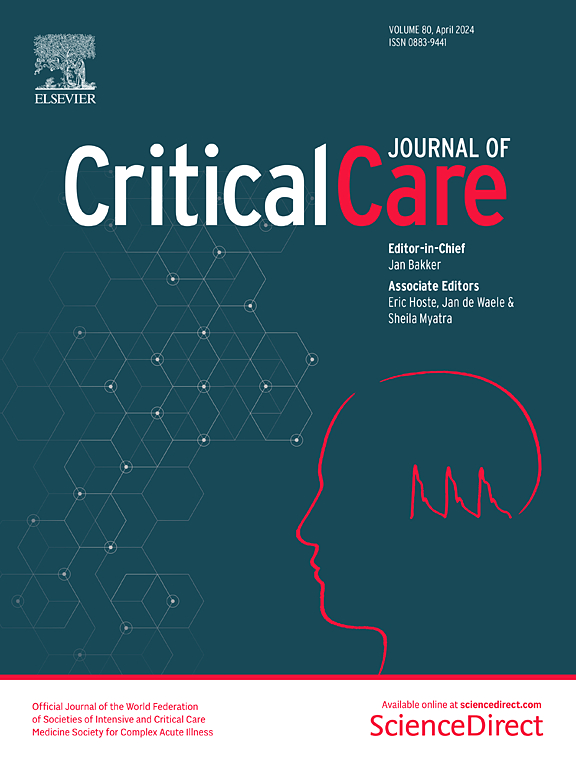肠衰竭作为危重疾病的原因和后果的综述
IF 8.8
1区 医学
Q1 CRITICAL CARE MEDICINE
引用次数: 0
摘要
在危重疾病中,肠道功能的所有要素都受到干扰。随着肠道微生物群落失去分类多样性和新的毒力因子的出现,生态失调也随之发展。肠道通透性增加,允许细菌和/或细菌产物的易位。上皮功能在细胞水平上发生改变,肠道上皮细胞死亡增加和增殖减少破坏了上皮单层的稳态。肠道免疫功能受损,同时激活不适应的促炎性和抗炎性信号,导致组织损伤和对感染的易感性。此外,内脏血管收缩导致血流减少并伴有局部缺血改变。总之,这些相互关联的胃肠功能障碍因素驱动,然后延续多器官功能障碍综合征。尽管维持肠道内稳态的重要性显而易见,但在危重疾病中,很少有可靠的肠道功能测量方法。此外,虽然已经提出了多种治疗策略,但大多数尚未显示出最终的益处,护理在很大程度上仍然是支持性的。肠道在危重疾病中的关键作用是第十届围手术期质量倡议会议的主题,该会议旨在总结文献现状并确定未来研究的关键知识差距。这篇综述是那次会议的成果。本文章由计算机程序翻译,如有差异,请以英文原文为准。
A review of gut failure as a cause and consequence of critical illness
In critical illness, all elements of gut function are perturbed. Dysbiosis develops as the gut microbial community loses taxonomic diversity and new virulence factors appear. Intestinal permeability increases, allowing for translocation of bacteria and/or bacterial products. Epithelial function is altered at a cellular level and homeostasis of the epithelial monolayer is compromised by increased intestinal epithelial cell death and decreased proliferation. Gut immunity is impaired with simultaneous activation of maladaptive pro- and anti-inflammatory signals leading to both tissue damage and susceptibility to infections. Additionally, splanchnic vasoconstriction leads to decreased blood flow with local ischemic changes. Together, these interrelated elements of gastrointestinal dysfunction drive and then perpetuate multi-organ dysfunction syndrome. Despite the clear importance of maintaining gut homeostasis, there are very few reliable measures of gut function in critical illness. Further, while multiple therapeutic strategies have been proposed, most have not been shown to conclusively demonstrate benefit, and care is still largely supportive. The key role of the gut in critical illness was the subject of the tenth Perioperative Quality Initiative meeting, a conference to summarize the current state of the literature and identify key knowledge gaps for future study. This review is the product of that conference.
求助全文
通过发布文献求助,成功后即可免费获取论文全文。
去求助
来源期刊

Critical Care
医学-危重病医学
CiteScore
20.60
自引率
3.30%
发文量
348
审稿时长
1.5 months
期刊介绍:
Critical Care is an esteemed international medical journal that undergoes a rigorous peer-review process to maintain its high quality standards. Its primary objective is to enhance the healthcare services offered to critically ill patients. To achieve this, the journal focuses on gathering, exchanging, disseminating, and endorsing evidence-based information that is highly relevant to intensivists. By doing so, Critical Care seeks to provide a thorough and inclusive examination of the intensive care field.
 求助内容:
求助内容: 应助结果提醒方式:
应助结果提醒方式:


